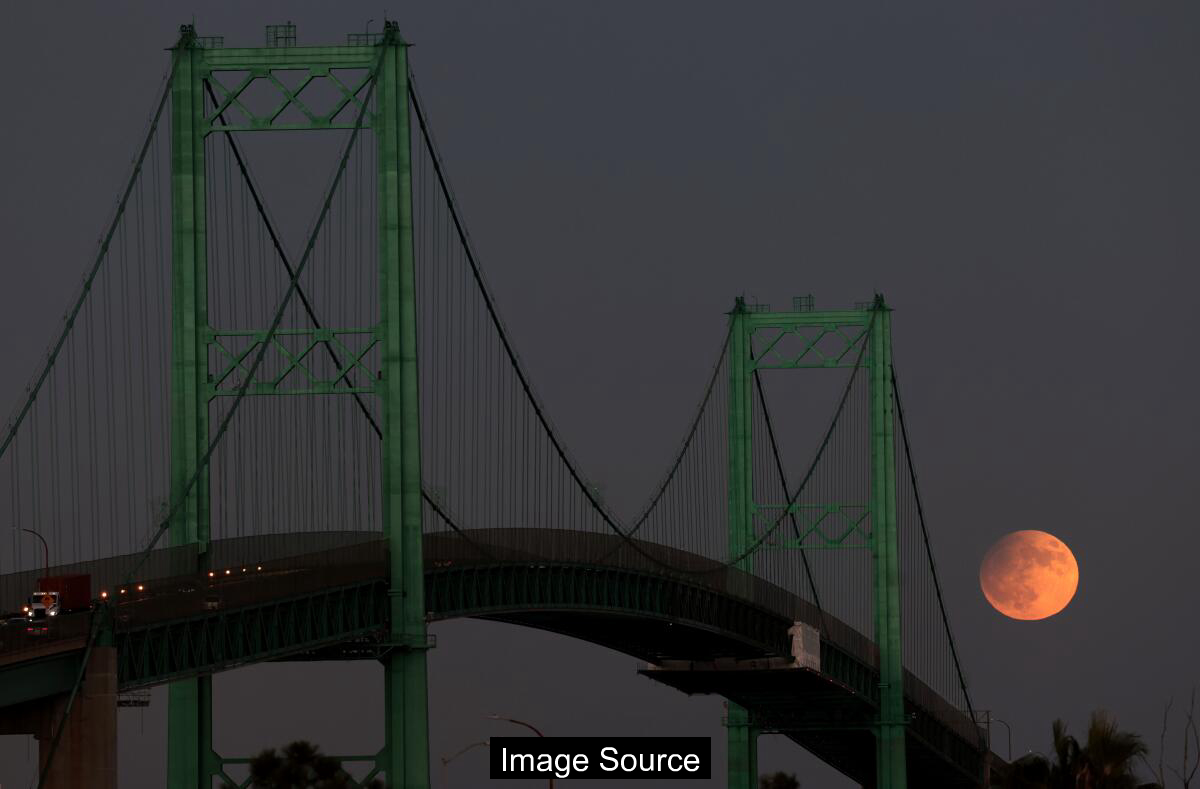The proposed bridge expansion at the Port of Los Angeles has ignited heated debate among local residents and environmental groups concerned about potential disruptions to the surrounding neighborhood. Construction plans, which aim to improve maritime infrastructure and shipping efficiency, have drawn sharp criticism over anticipated noise, traffic, and ecological impacts.

Vincent Thomas Bridge: A Critical Infrastructure Crossroads
The Vincent Thomas Bridge, a crucial transportation link connecting downtown Long Beach to San Pedro and Terminal Island, stands at a pivotal moment of potential transformation. Built over 60 years ago, the bridge has become a symbol of regional connectivity and maritime infrastructure. California Department of Transportation (Caltrans) is contemplating an ambitious upgrade that could significantly impact the region’s transportation and economic landscape.
The current infrastructure project, initially scoped at $706 million, involves re-decking the bridge and replacing critical components like railings, fences, and median barriers. However, the Port of Los Angeles has proposed an additional enhancement: raising the bridge’s height by 26 feet to accommodate next-generation cargo ships. This proposal would extend the project timeline and increase costs by approximately $1.5 billion.
Port of Los Angeles Executive Director Gene Seroka argues that the bridge modification is essential for maintaining the port’s competitive edge. By increasing the bridge’s clearance to 211 feet, larger and more energy-efficient cargo vessels could pass underneath, potentially expanding the port’s container capacity and creating new job opportunities.
Economic and Logistical Considerations
The proposed bridge modification could dramatically impact the region’s maritime and transportation sectors. Currently, about 40% of the port’s cargo container capacity lies beyond the existing bridge structure. Raising the bridge would enable the port to accommodate larger, more modern shipping vessels that are increasingly becoming the industry standard.
Potential economic benefits include a projected 20% increase in job opportunities for longshoremen, truckers, warehouse workers, and terminal operators. The newest container ships are not only larger but also more environmentally friendly, aligning with broader sustainability goals in the shipping industry.
However, the project comes with significant logistical challenges. The bridge closure would extend from the originally planned 16 months to approximately 28 months, requiring complex traffic rerouting strategies. Preliminary plans suggest using Harry Bridges Boulevard in Wilmington and utilizing the 110 and 405 freeways as alternative routes.
Community and Stakeholder Perspectives
Local stakeholders have expressed mixed reactions to the proposed bridge modification. The San Pedro Chamber of Commerce, while initially cautious, voted to support a comprehensive study examining the project’s potential impacts. Elise Swanson, the chamber’s president, emphasized the bridge’s significance beyond mere transportation, highlighting its role in connecting communities culturally and economically.
Los Angeles City Councilmember Tim McOsker has advocated for a balanced approach, supporting the bridge raising contingent upon ensuring public safety and addressing local community needs. He acknowledged the project’s importance to industry and workforce while also recognizing the substantial time and cost implications.
The Pacific Merchant Shipping Association has strongly endorsed the bridge modification, viewing it as a critical investment in regional infrastructure. Association President Michael Jacob emphasized the importance of extending the bridge’s operational lifespan and maintaining the port’s competitive positioning.
Project Timeline and Challenges
The original Caltrans plan targeted bridge reopening by late 2027 or early 2028, strategically aligning with the 2028 Summer Olympic Games in Los Angeles. However, the proposed height modification could potentially delay this timeline, creating additional complications for regional transportation and tourism.
Funding for the bridge raising has partially been secured through private banks and industry participants. The Bayonne Bridge in New York and New Jersey, raised in 2019, serves as a precedent for similar infrastructure modifications.
Environmental reviews, financing arrangements, and detailed planning will be critical in determining the project’s feasibility. Caltrans is expected to make a definitive decision in October following a late September meeting with Port of Los Angeles representatives.
FAQ: Bridge Modification Insights
Q1. Why is raising the Vincent Thomas Bridge necessary?
A1. Raising the bridge would allow larger, more efficient cargo ships to pass underneath, potentially increasing port capacity, creating jobs, and maintaining the Port of Los Angeles’s global competitiveness.
Q2. What are the primary challenges of this infrastructure project?
A2. Key challenges include extended construction time (28 months), significant cost increases (approximately $1.5 billion), complex traffic rerouting, and potential disruptions to local communities and tourism.
Strategic Pointers
The Vincent Thomas Bridge modification represents a complex infrastructure decision with far-reaching economic and logistical implications. Balancing technological advancement, economic growth, and community needs will be crucial in determining the project’s ultimate success.
Stakeholders must continue collaborative dialogue, ensuring that the proposed modifications serve both immediate transportation requirements and long-term regional development strategies. Transparent communication and comprehensive impact studies will be essential in gaining public support.
As global shipping technologies evolve, infrastructure investments like the Vincent Thomas Bridge modification become increasingly critical. The project symbolizes the ongoing adaptation of urban transportation systems to meet emerging economic and technological challenges.
※ This article summarizes publicly available reporting and is provided for general information only. It is not legal, medical, or investment advice. Please consult a qualified professional for decisions.
Source: latimes.com